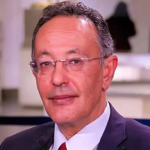Economic Interdependency and Conflict
Economic interdependence among Arab countries has intensified since the mid 1990s. Such date coincided with the establishment of the World Trade Organization (WTO), and the proliferation of the preferential trade agreements (PTAs) worldwide in a second wave (after the first wave that took place in the 1950s and 1960s). Arab countries have embarked on the Pan Arab Free Trade Area (PAFTA), as well as engagement in new sub regional trade agreements (e.g. Agadir), or deepening the existing ones (e.g. the GCC). Moreover, Arab countries have signed several PTAs with non Arab countries including developed partners (e.g. the EU, the US, and Canada) as well as developing countries (e.g. COMESA, Tripartite, and AfCFTA). The move towards increased economic interdependence has been part of the globalization move (with intensified trade and investment relationships) around the world that was reinforced by the international organizations as the World Bank and the WTO, which have been promoting free trade. The academic literature at that time pointed out to the positive spillover effects of such increased economic interdependence and its potential effect in curtailing and preventing regional conflicts (Barbieri, 1996).
The frictions arising between different Arab countries among each other (e.g. Qatar with other GCC members, Qatar and Egypt) or between Arab countries and non Arab countries (e.g. Egypt and Turkey or Egypt and Ethiopia) raises questions on the ability of such PTAs to prevent or lessen conflicts. The question that then arises is why didn’t increased economic interdependence prevent or lessen such frictions and potential conflicts? Are we missing something here, as that there is no relationship at least in terms of the effect of increased economic interdependence on conflicts? Or it is in the design of the PTAs which were shallow and not deep enough and hence did not provide their necessary effect in terms of increasing economic interdependence to start with, and providing the intense type of cooperation among the different parties. Or such PTAs lacked the necessary conflict management mechanisms that could have played a role in lessening the increasing frictions.
ERF acknowledges the generous financial contribution of the Ford Foundation (FF).

Ahmed Ghoneim
Professor, Faculty of Economics and Political Sciences, Cairo University and CEO, Grand Egyptian Museum

Katarzyna W. Sidło
Director of the Middle East and North Africa Department, Center for Social and Economic Research

Mohamed Ali Marouani
Associate Professor of Economics, Sorbonne University

Gunes Arkadas Asik
Assistant Professor of Economics, TOBB Economics and Technology University, Ankara

Khalid Sekkat
Full Professor of Economics, University of Brussels

Ibrahim Saif
CEO, Jordan Strategy Forum
What Does the Literature Tell Us on the Relationship between Economic Interdependence and Conflict Management? An Overview with A Focus…
The present paper provides the conceptual framework for the analysis of relationship between economic interdependence and conflict prevention,... Read More
Sanctions, Wars and MENA Trade
The paper investigates to what extent the intra-MENA political tensions adversely affect intraregional trade (IRT). While traditional economic... Read More
The Relationship between Economic Interdependence and Conflict Prevention: An Institutional Perspective
This paper investigates the relationship between economic interdependence and conflict prevention. It will focus on the institutional dimensions... Read More
Economic Interdependence and Conflict in MENA
Militarized conflict worldwide has been on a declining trend after World War II while trade and economic interdependence... Read More


